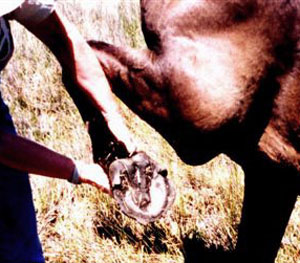
Feral South African horse - wet
Why Use the Wild Horse Model?
by Yvonne Welz ©2007
Not all barefoot methods use a "wild horse model" as a focus for trimming guidelines -- for instance, some use a mathematical model, while others use a self-trimming domestic horse model. However, the "Wild Horse Model" is probably the most popular model for trimming, for one good reason: it works!
The most important thing to remember is: location, location, location! In other words, the horse's location & environment are everything! The horse's hoof is an incredibly adaptive structure that very simply attempts to adapt to whatever situation it exists in. Wild horses live in various terrain and environments throughout the world, and their hooves, shaped by their living situations, are equally different in so many ways.
Here is a feral South African horse that lives in wet terrain:

Feral South African horse - wet
And here is a feral South African horse that lives in dry terrain:
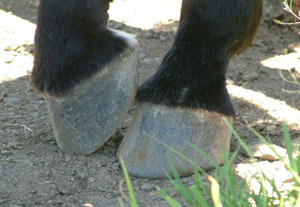
Feral South African horse - dry
Notice that the wet terrain horse's hooves resemble "mud tires" and probably serve this horse very well in its environment. The dry terrain horse's hooves serve it equally well in its own environment. But, tell the truth - which do you want YOUR horse's hooves to look like? Most people would prefer the shape and condition of the second horse's hooves. That is just one reason why so many barefoot trimming methods have leaned towards an imitation of dry terrain wild horse hooves, i.e. the "Mustang Model."
The Mustang Model serves most captive horses very well, since the majority of our domestic horses just do not live in a bog. The Mustang Model is very structurally sound, and when imitated, leads to thicker hoof walls, and a stronger coronet connection. We now believe the scientific reasons for this may exist in the studies of Dr. Robert Bowker. His work suggests that the real problems with conventional hoof care (shoeing and/or trimming so that the wall bears most of the weight) is that it creates "peripheral loading" of the hoof, which decreases blood perfusion and leads to a degeneration of hoof quality over time. A mustang hoof is not peripherally loaded - rather, it is an example of the ideal situation of the entire solar surface of the hoof taking its share in weightbearing. Mustang hooves have short toes, short heels, relieved quarters, and a rolled hoof wall edge, as this example below:
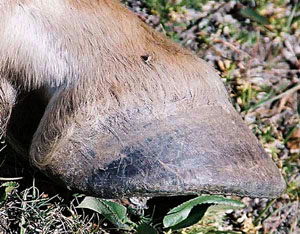
Wild Mustang Hoof
It doesn't matter whether a horse is barefoot or shod, most horses presented to us for the first time have peripherally loaded hooves, and display negative signs of this in their hoof form, which often includes hoof wall growth rings, flares or slippers, and a sharp edge on their coronet attachment. Over and over again, we have seen the positive effects of removing that situation of peripheral loading from the hoof. This is done by rolling the edge of the hoof wall heel to toe, shortening the toes, and ensuring that the heels, back of the bars, and outer edge of the sole bear weight equally and evenly, without excessive pressure anywhere. Leaving too much hoof will cause problems, and so will removing too much hoof! There is a balance in between, and that is the place that is right for that horse, at that time.
Below is a photo of a fairly healthy, sound, domestic horse hoof (never shod). This is what many people consider to be very healthy - but there are actually problems here. This photo shows the results of too much peripheral loading going on. The hoof wall has several horizontal growth rings, which are signs of hoof wall stress. We were able to actually feel the attachment of the hoof wall to the coronary band, with a sharp edge. A healthy hoof does not have this sharp coronary connection. This sharp coronary connection seems to be directly related to peripheral loading. The good news is that this can be corrected, and when it is, the hoof grows out healthier.
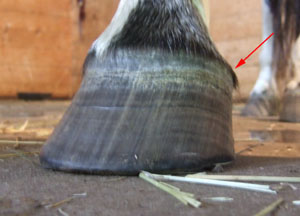
Domestic Hoof - peripheral loading, barefoot
Below is the same horse after one trim. Notice the elements of trimming which resemble the mustang hoof above. Note that the hoof is much longer than a mustang hoof. This is partially due to the internal bone structure - a mustang hoof and the healthiest of hooves have bones that are actually higher in the hoof capsule. This horse's coffin bone is too low inside the hoof capsule (compared to wild horses and the healthiest of domestic hooves), which is the case with MOST horses. Over time, that situation might actually improve, with a better coronet connection.
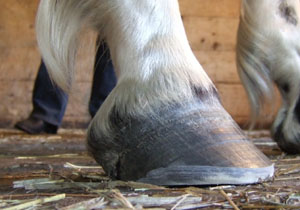
After trimming.
Below, here is a super healthy domestic horse that has an ideal coronet connection (full and round, with no sharp edge at all), and probably has internal bone structure similar to a mustang's. Notice how very "short" his hooves look - this is due to the difference in internal structure.
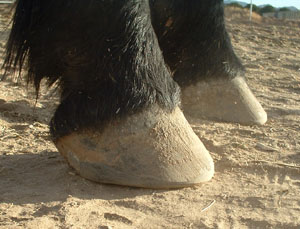
Some people ask whether it is correct to pattern a trim after wild horse hooves. After all, wild horses don't carry riders or do any kind of work, and they can choose their trails across their terrain.
Domestic horses live lifestyles that place unnatural stresses upon their hooves. Confinement, repetitive movement patterns, and extra weight of the rider take their toll. We think that makes it an even better reason to give domestic horses more "biologically-appropriate" hooves! We should never accept a standard of hoof care that allows for slow deterioration of hoof health over the years. Look around at the hooves on all the horses around you, take photos and measurements of your horses' feet, and chart their condition over time. The majority of horses do not receive constructive hoof care -- and the majority of horses do go degeneratively lame from a condition related to their hooves. This is not anyone's fault, but rather that horsepeople have, on a whole, failed to recognize what a healthy hoof really is, and how to create one. Why shouldn't we figure out ways to create the healthiest hooves possible in our modern domestic horse? Shouldn't this be a priority for all horsepeople?
It is evident in the studies of Dr. Robert Bowker (a researcher who started out many years ago with no interest in barefooting horses, but who simply wanted to understand how the hoof worked), that the hoof was designed by nature to have a certain form and function, and this is clearly defineable. This form and function is best displayed by the hooves of feral horses and self-trimming domestic horses who have ideal living conditions. This is the form that most natural hoof trimming methods imitate, and it is a form that functions well, for both the wild horse, as well as the domestic horse.
For anyone who still has doubts about the relevance of wild horse hoof form to our domestic horses, we ask, what other basis could there be, besides nature? What is the logic behind an unnatural hoof form? Or a shape that develops out of a horse's pathological response to unnatural stresses of captivity and lack of movement? Surely, that is not a pathway to health!!
We believe that the hooves should be trimmed with respect to the variations in the horse's terrain and environment, while trying to minimize any negative peripheral loading effects. Simply put, wet terrain horses can tolerate longer hoof walls, because wet terrain minimizes peripheral loading effect. Think of deep squishy mud, and how that supports the center of a hoof. Now put that same hoof on concrete, and the solar support is gone! The severe peripheral loading of the latter situation will also cause damage inside the hooves. A horse living in very deep, soft, wet terrain will be able to tolerate longer walls without problems (such as the wet-terrain feral South African horse above), and this may even help create a "mud-tire" effect for that horse, but make sure to adjust the trim when the weather changes and the mud dries up! By the way, a horse with a dry-terrain type trim that finds itself in wet conditions will not suffer from any real negative effects to the hooves, but the hooves may be a little bit slippery, since the dry terrain hoof lacks traction (everything is smooth and rounded).
Here are some more examples of mustang hooves:
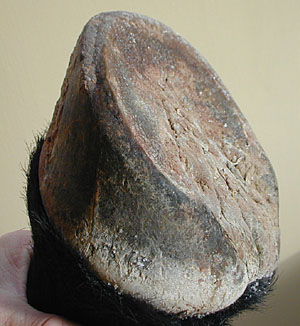
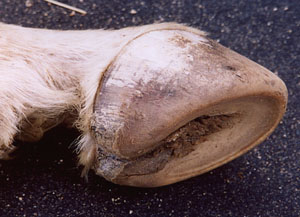
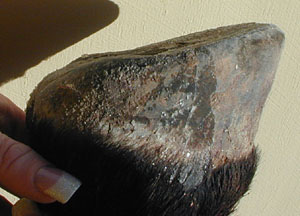
The Wild Horse Model is popular because it is so effective. Even a beginner can get pretty dang good results if they follow some basic guidelines, and an advanced trimmer can brilliantly transform an ordinary hoof into a high performance hoof. Barefoot trimming is still in its infancy -- the evolution of hoofcare is happening right now! And once again, humankind is left humbled by the fact that mother nature seems to know best.
(June 2007)
©2007 by The Horse's Hoof. All rights reserved. No part of these publications may be reproduced by any means whatsoever without the written permission of the publisher and/or authors. The information contained within these articles is intended for educational purposes only, and not for diagnosing or medicinally prescribing in any way. Readers are cautioned to seek expert advice from a qualified health professional before pursuing any form of treatment on their animals. Opinions expressed herein are those of the authors and do not necessarily reflect those of the publisher.
The Horse's Hoof Website
Home - About Us - Horselover's
Corner - Articles - Barefoot
Performance - Barefoot Stories - Hoof
Gallery - Natural
Horse Care - EPSM
- The Horse's Hoof Clinics - Events
- Trimmers -
Pioneers - Friends
- Classified - Resources
- News - Links
To go shopping or subscribe to our magazine, please click here: The
Horse's Hoof Store
If you don't see a column to the left: To view the frames version of this site, please click here: TheHorsesHoof.com
The Horse's Hoof is a division of:
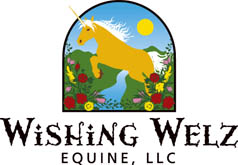
The Horse's Hoof
P.O. Box 1969
Queen Creek, AZ 85142
Phone (623) 935-1823
Message Phone: 1-623-935-1823
(Leave a message anytime.)
Email: editor @ TheHorsesHoof.com (delete spaces)